Visiting the Stalin Museum in Gori, the Georgian town where the dictator was born, is an experience that prompts unexpected reflections on history, memory and tourism. Soviet nostalgia in Georgia takes on a distinctly different flavour from what you might expect in the West, such as the fancy Retro Museum in Budapest. The Stalin Museum in Gori offers a curious blend of serious reverence and selective forgetting. If you plan to visit with a critical eye and a healthy dose of curiosity, here’s what you need to know.
And Uncover Soviet Echoes and the Georgian Charm of Stalin’s Hometown
Table of Contents
Stalin Museum in Gori: Bold Soviet Architecture That Commands Attention
From the moment you arrive, the museum’s monumental Soviet style architecture demands your attention. Big, bold and unapologetically imposing, the building’s stark, angular lines and vast stone façade set the tone for a journey into a very particular and carefully curated version of history.
PLAN YOUR TRIP TO GEORGIA
Stay online everywhere in Georgia with Holafly eSIM and enjoy unlimited data, fast internet, no roaming: perfect for using Google Maps and sharing your trip as you go.
Travel worry-free with Heymondo travel insurance, so you can enjoy every moment of your Georgian adventure without stress.
I have to admit, it was challenging to keep a straight face and maintain full respect. The entire place has an oddly surreal vibe that makes you nervously chuckle, even as you try to take it seriously. Wait until you see Stalin’s childhood home, carefully preserved inside another bizarrely grand building next door. It’s enough to make you laugh nervously.
What You Will See Inside the Stalin Museum Gori: Key Exhibits and Highlights
Inside, the museum feels like a deliberate homage to Soviet propaganda portraying Stalin as the perfect student, children’s friend and clever statesman. The atmosphere wavers between reverence and unease, making the museum both fascinating and unsettling. But honestly, it is almost impossible not to smirk occasionally during your visit.
Inside Stalin Museum Gori: Glorification of the Comrade With Little Criticism
Once inside, any doubt about the museum’s tone quickly disappears. The entire exhibition seems devoted to glorifying Stalin’s legacy with lavish portraits, heroic poses and idealised scenes filling every room. It feels less like a museum and more like a shrine to the Great Leader, minus the incense.
One particularly striking painting shows Stalin bathed in heavenly light, hugging a little girl. It is a perfect example of the museum’s overall vibe.
Unlike Western museums, which usually maintain some critical distance from controversial figures, here the story is simple: Stalin was great, full stop. Only in the very last rooms, tucked away and off the main path, is there a brief, almost apologetic mention of the Gulag system.
The main halls are packed with personal artefacts and black and white photos, from Stalin’s school certificates to his pipe collection. You will also find his office furniture, an impressive array of gifts from foreign dignitaries, all carefully arranged to highlight his supposed brilliance and global influence. If you want nuance, you will have to bring your own imagination or at least a critical history book.
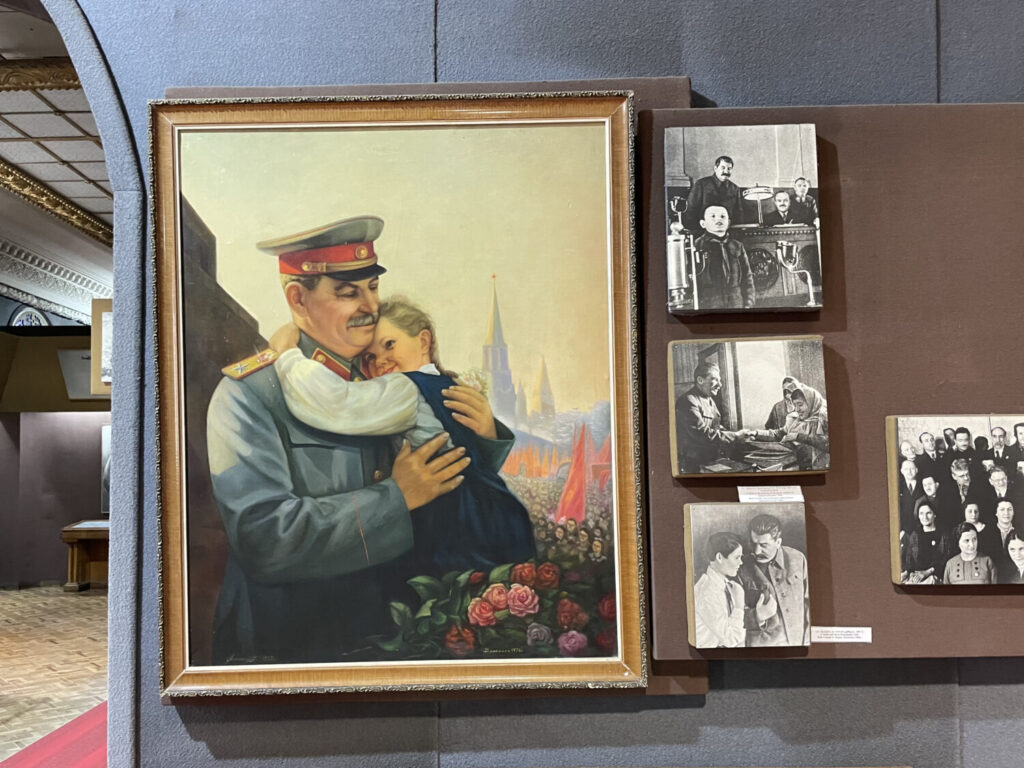
The Life of Stalin at the Gori Museum: From Student to Soviet Leader
The museum leads you through Stalin’s life across six chronological rooms, starting with his early days in Gori. Here, you see his modest origins, including his surprisingly religious schooling, a curious chapter given what followed. Or perhaps it’s obvious to those who attended religious school.
From there, the story traces his rise within the Bolshevik Party, surrounded by a mix of personal items and historical memorabilia, including pipes, fur coats, official uniforms, and more.
If you pay attention, you will notice some amusing slip ups. Political heavyweights like Winston Churchill and Franklin D. Roosevelt appear with slightly mangled names such as Cherchill and F. Rousvelt. Whether this is simple carelessness or a subtle hint at the museum’s less-than-perfect attention to detail, it serves as a poignant contrast to other quirky historical displays such as the Kanchanaburi World War Two museums in Thailand or the guilty omissions at Brussels’ BELvue Museum.
The highlight of the indoor exhibit is a macabre death mask of Stalin, resting on a velvet cushion inside a stark, Soviet-style concrete chamber. And it’s so weird and ugly that I won’t include any pictures of it in this blog post.
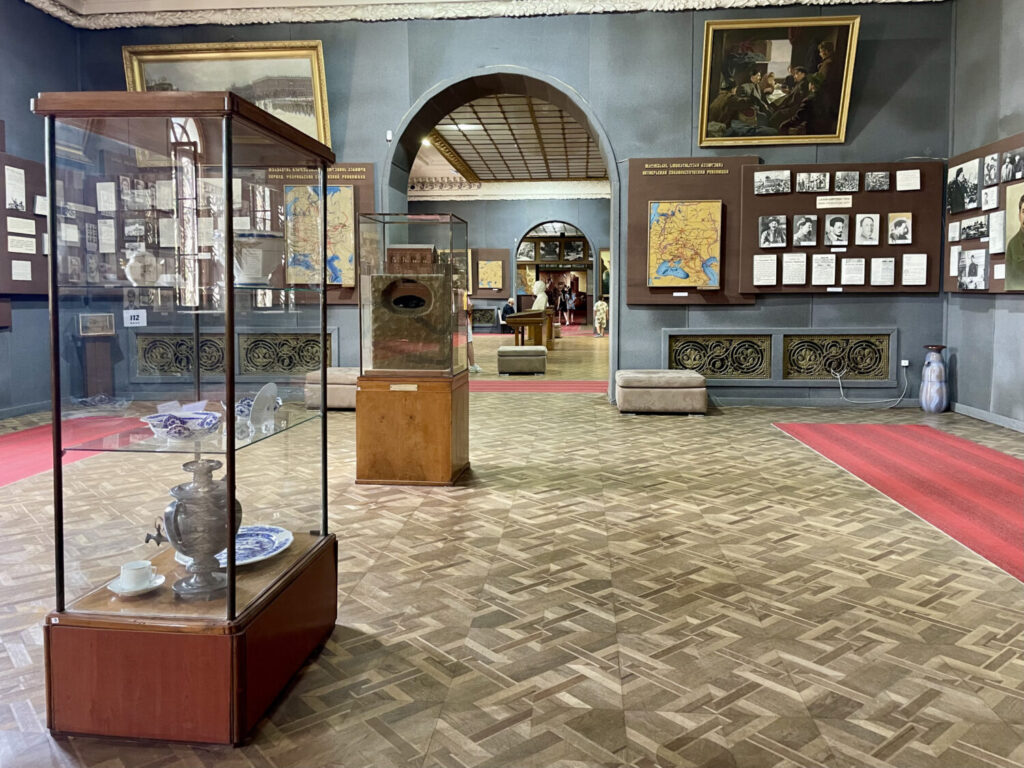
Stalin Museum and Political Repression: So Quiet You Might Miss It
Trying to make sense of the exhibition’s logic is challenging, as it seems to disregard basic curatorial principles. The only nod to Stalin’s darker legacy is a tiny, almost apologetic display about the political repression, which feels less like a serious exhibition and more like a rushed school project.
Minimal explanations, no emotional depth and zero context make it feel like an afterthought stumbled upon rather than a confronting piece of history.
Adding to the surreal atmosphere, the final room includes a cupboard converted into a mock prison cell, a theatrical prop rather than a respectful reminder of real suffering. If you expected a serious reckoning with Stalin’s brutal repression, you will have to look elsewhere. Not in Georgia, I guess.
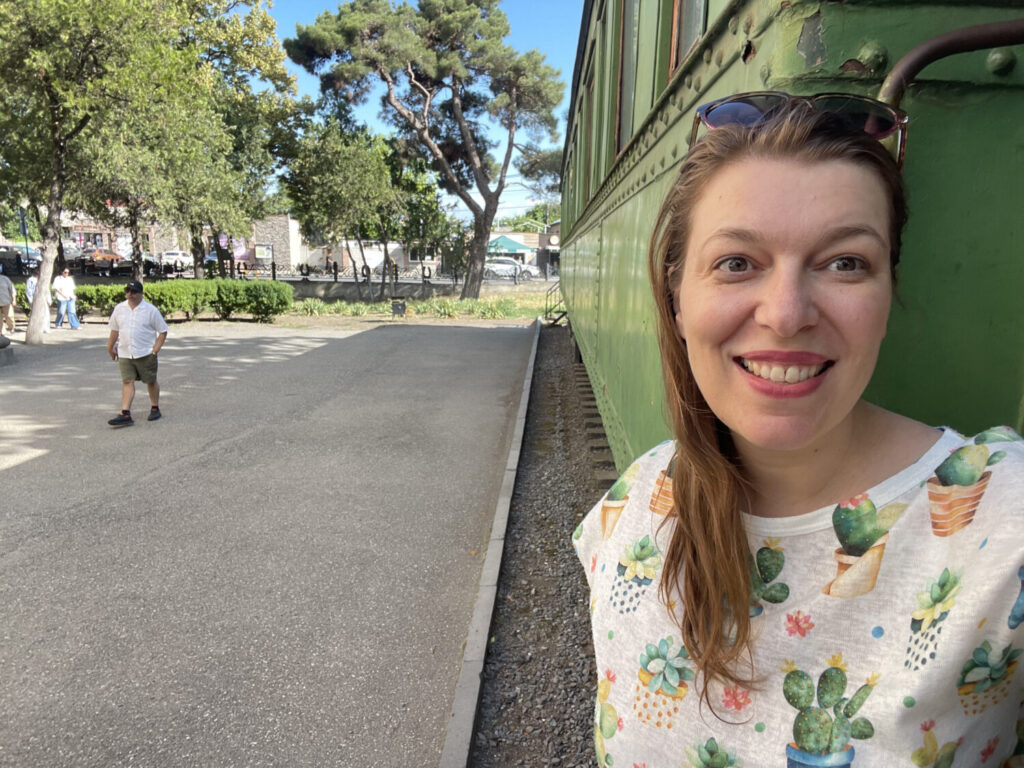
Stalin’s Private Train Carriage in Gori: A Not So Luxurious Mobile Palace
After exploring the museum, stepping into Stalin’s private train carriage in the garden feels like entering a different world. At first glance, the carriage is surprisingly modest, especially compared to those of other rulers and dictators of the time.
I must admit I was almost disappointed. Stalin’s immense power seemed to be reflected in a nearly complete lack of luxury, perfectly in line with the communist ideology that condemned extravagance.
You will not find lavish decorations or gilding here, just a functional, austere, pragmatic space. This mobile palace, with its small office, dining area, and private bathroom, reveals much more than just Stalin’s lifestyle.
It symbolises the strange contrast between his absolute authority and the propaganda of modesty he projected. A strange, fascinating experience all at once.
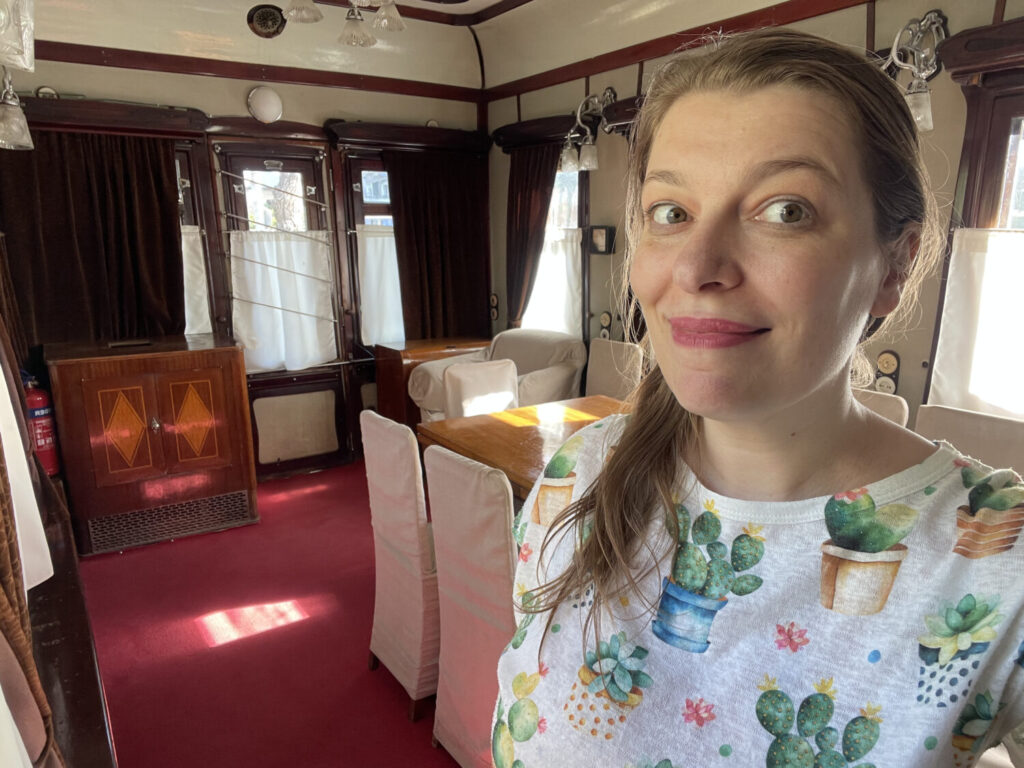
Stalin’s Childhood Home in Gori: A Humble Beginning Preserved Inside a Grand Monument
One of the museum’s most striking sights is Stalin’s childhood home, a modest wooden house where he spent his early years. It has been carefully incorporated into a grand monumental building designed to preserve it.
Walking around this tiny wooden house, now enclosed within imposing walls next to the main museum, you cannot help but notice the surreal contrast between Stalin’s humble beginnings and the theatrical glorification happening just metres away. Even his early childhood received a palace-like treatment, as if modesty itself needed a monumental stage. It is a bizarre, yet physical, reminder of the myth carefully constructed around Stalin.
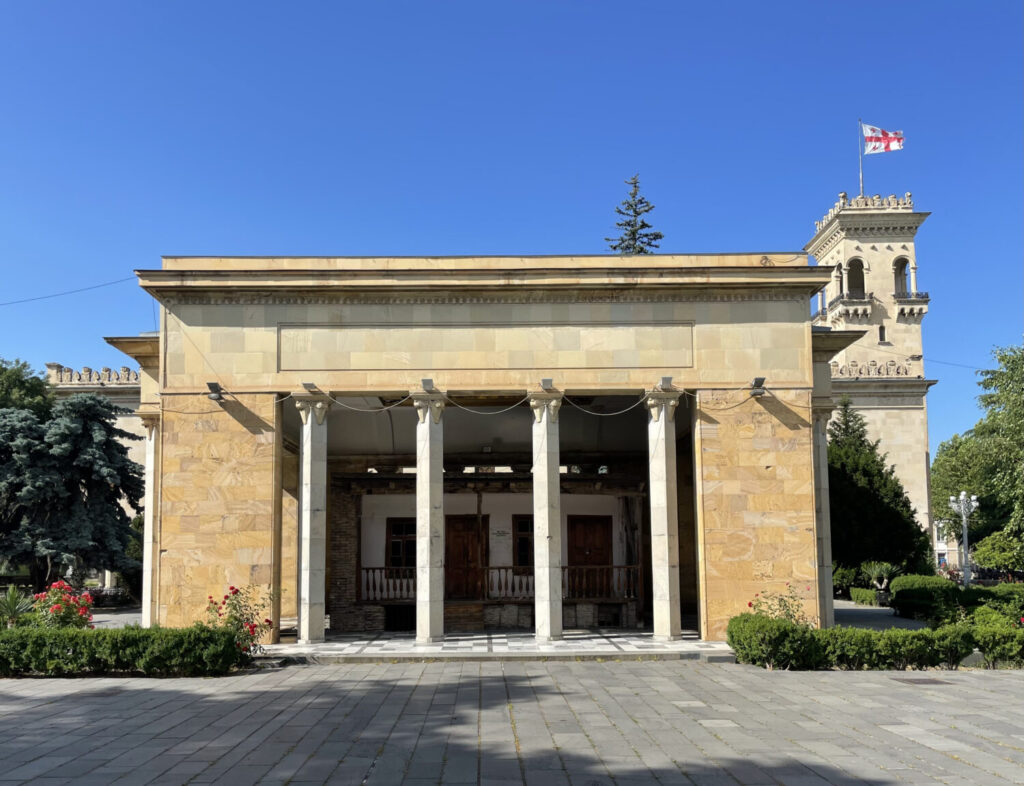
Stalin Museum Gori Visitor Guide: Tickets, Opening Hours and Insider Tips
Before my visit, I emailed the museum for information, but I never got a reply. Still, once there, it was amusing to watch the staff seemingly doing very little. Two guards, a manager, a ticket clerk, a souvenir shop assistant and a few others who appeared utterly bored.
The official website was no help either. In fact, at the time of writing, it strangely promoted an online casino for German customers.
Ironically, this grand memorial to Communism ends with a splash of capitalism. The gift shop at the exit sells souvenirs, such as mugs and magnets, featuring Uncle Joe’s ever-smiling face. I must admit that I was almost tempted to buy a very kitsch magnet!
Stalin Museum Gori Ticket Prices and Opening Hours
Tickets cost 15 GEL, approximately €5, and include entry to Stalin’s private train carriage. Children under six enter free.
While you can technically buy a ticket without the train carriage visit, the bored staff will not really offer that option. Moreover, you can only enter the carriage if there is someone from the staff who opens it for you. I was lucky that an employee recognised me from the ticket office. Still, it’s also true that foreign tourists seemed rather rare at the Stalin Museum in Gori…
Guided tours might be available, according to some international blogs, but when I visited, nobody mentioned them. Of course, none in the museum was able to speak a word in basic English.
The museum is open daily except Mondays from 10 am to 6 pm.
How to Get to the Stalin Museum in Gori from Tbilisi: Distance and Driving Tips
Gori is roughly 85 kilometres from Tbilisi, accessible via a relatively new highway. The drive takes about two hours but can vary depending on traffic, especially during rush hour.
Driving in Georgia is an adventure itself, with unpredictable roads and unique local driving styles. Thankfully, the highway section between Tbilisi and Gori is mostly complete, making the journey smoother than before.
Near the museum, you will find Stalin Park, a nice spot to stretch your legs after your visit. Parking near the museum is not well-organised. There are no official lots, so you might have to grab whatever space you can find along the road.
Stalin Museum
32 Stalin Avenue, Stalin Park, Gori 1400
Explore More of Gori’s Soviet Past and Georgian Spirit
When you’re in Gori, after a stop at the Stalin Museum, there’s plenty more to uncover. Just nearby, the Great Patriotic War Museum offers a fascinating dive into the Red Army’s history, with medals, photos, and stories that bring the past to life. If you feel you’ve had enough of the Soviet era, head up to the medieval Gori Fortress, perched on a rocky hill with stunning views over the town.
English isn’t widely spoken in Georgia, especially from the people working at the Stalin Museum, so joining a guided tour like Gori’s Timeless Echoes can really help you get the full story. With an expert guide, you’ll discover the little details and hidden histories that make Gori so captivating, much more than you’d find on your own!
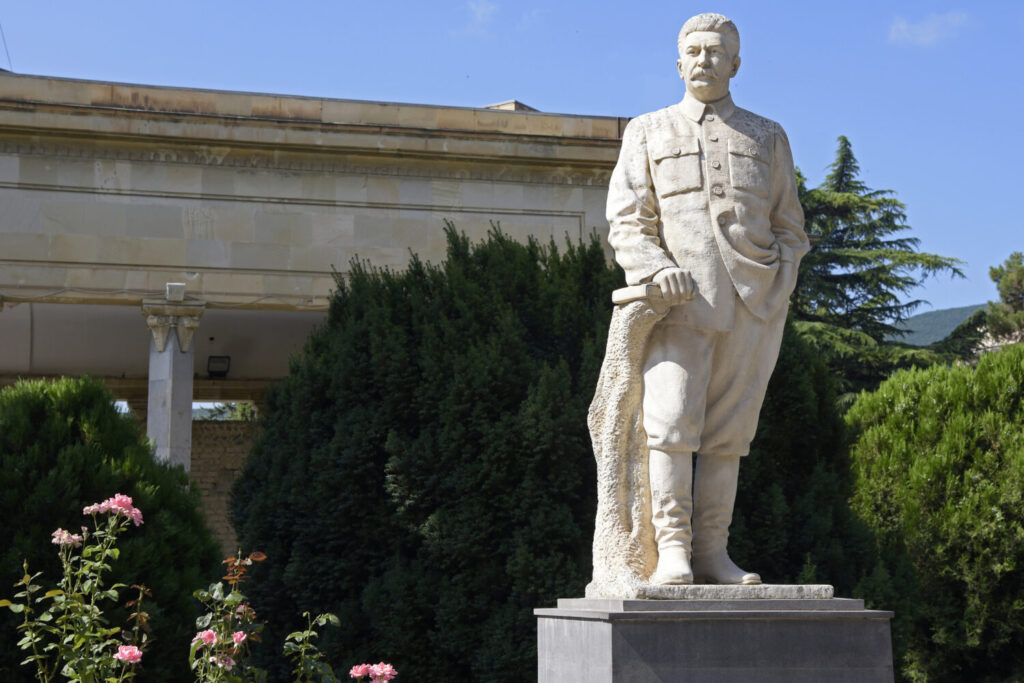
In the end, the Stalin Museum in Gori is a surreal blend of grand Soviet nostalgia and carefully polished myth, where history gets a theatrical makeover and criticism is kept quietly out of sight. From heroic portraits to Stalin-branded souvenirs, it’s part shrine, part stage set. And just when you think it could not get more unexpected, there is the souvenir shop ready to sell you a smiling Uncle Joe tote bag. I’m really curious to read your comments on this bizarre museum!
